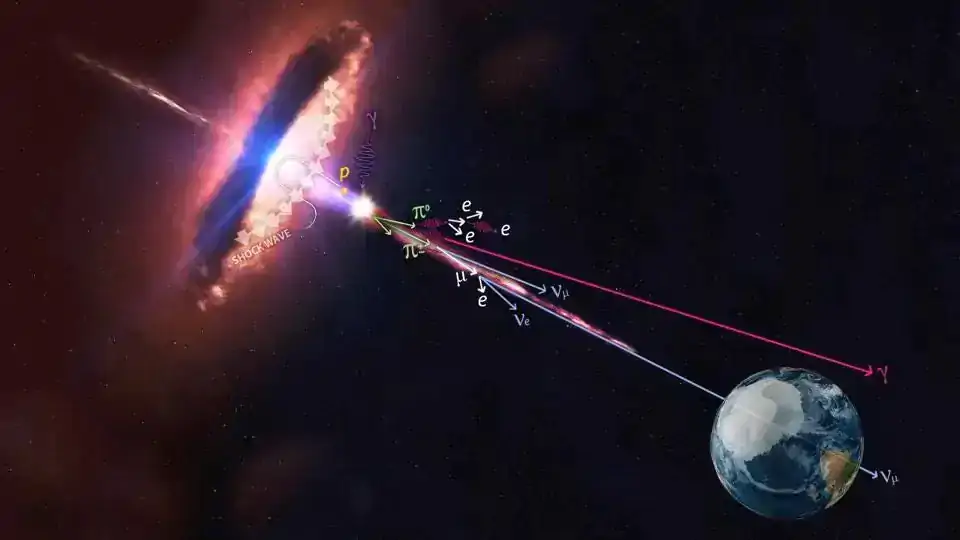Saturn is the sixth planet from the Sun and the second most massive planet in the solar system.
It is mainly known for its rings. Jupiter, Uranus, and Neptune have rings, too, but Saturn’s rings are larger and brighter. That is why Saturn is dubbed “the ringed planet.”

Wikimedia Commons/Kevin Gill
Here are some of the most interesting Saturn facts.
- Saturn's moon Titan is so similar to Earth. Now we know why
- Scientists discover the hidden force behind Saturn’s Aurora Borealis
Interesting facts about Jupiter that will blow your mind (https://interestingengineering.com/science/interesting-facts-jupiter)
1. How many rings does Saturn have?
Saturn has seven large main rings named for a letter in the alphabet, following the order they were discovered. This means that ring A is not the one that is closest or farthest to the planet but the first one that was spotted. Starting at Saturn and moving outward, the order of the rings is D ring, C ring, B ring, A ring, F ring, G ring, and E ring.
In fact, the first three letters of the alphabet (A, B, and C) correspond to the brightest rings of Saturn, with ring A and ring B being the brightest, and B the thickest. Rings D, E, F, and G are fainter. Therefore, they are harder to see, which explains why they are also the ones that were discovered later.

Wikimedia Commons/Kelvinsong
All the rings are relatively close to each other except for rings A and B, which are separated by a gap of approximately 3,000 miles (4,800 kilometers) in width called the Cassini Division.
Altogether, Saturn's rings extend to 175,000 miles (282,000 kilometers) out from the planet. Farther out, the much fainter Phoebe ring lies in the orbit of Saturn's moon Phoebe.
2. What are Saturn's rings made of?
When Italian astronomer Galileo Galilei (1564-1642) observed Saturn’s rings with his telescope in 1610, he didn’t really know what they were and actually described them as “ears.” Dutch astronomer Christiaan Huygens (1629-1695), who was also an engineer, was able to see “a disk” surrounding Saturn with his enhanced, self-made telescope in 1655.

Dronandy/iStock
As other astronomers discovered the rest of the rings, one question arose: what were these rings made of? Here’s the most accepted answer: debris.
Saturn is a gas giant. As such, it has a lot of mass: 5.683 ? 10^26 kg. That is 95 times the mass of Earth. Planets with a lot of mass have strong gravitational fields. Saturn is not an exception, so it has attracted a lot of objects, “trapping” all kinds of particles around itself —mostly dust and rocky and icy fragments from moons, asteroids, and comets that shattered when torn apart by Saturn’s gravitational pull.
3. How many moons does Saturn have?
Because of its immense gravitational field, Saturn has 82 moons with confirmed orbits, although some are awaiting confirmation of discovery and official naming. Saturn is, in fact, the planet with the most moons in the solar system. It also has an uncountable number of moonlets (minor moons) in its rings.
Jupiter, the only planet in the solar system that is more massive than Saturn, has “only” 79 moons, although many are still awaiting official names. But it also has the largest moon in the solar system: Ganymede, which measures 3,275 miles (5,282 kilometers) in diameter.

dottedhippo/iStock
Saturn has the second-largest moon in the solar system: Titan, which was discovered by Christiaan Huygens during observations with his self-made telescope in 1655. With a diameter of 3,200 miles (5,150 kilometers), Titan is bigger than Mercury and almost as big as Mars.
But its most interesting characteristic is that it has an atmosphere that is composed mostly of nitrogen and methane, with small amounts of other carbon-rich compounds.
Energy from the Sun splits apart the methane and nitrogen molecules in Titan's atmosphere, and these recombine to form a variety of organic chemicals, including nitrogen and oxygen. The surface is carved by rivers, lakes, and seas of liquid methane and ethane, as well as a possible underground ocean of liquid water (possibly mixed with salts and ammonia) which could potentially harbor life.
This is why Titan is referred to as a critical scientific target by NASA, along with another Saturn moon called Enceladus.
Enceladus is the sixth-largest moon of Saturn. It is geologically active and has cryovolcanoes that expel water vapor and other volatiles into space. Some of them become part of Saturn’s E ring —if they don’t fall back into the moon’s surface.
Several gases, including water vapor, carbon dioxide, methane, and perhaps ammonia, carbon monoxide, and nitrogen, are among those expelled. Scientists have also determined that the plumes of material were being supplied by a global ocean inside the moon. Evidence also points to the existence of hydrothermal vents deep beneath Enceladus’ surface, similar to the hydrothermal vents on Earth’s ocean floor, possibly giving Enceladus all of the ingredients (water, organic molecules, and an energy source) necessary for life.
4. How far is Saturn from the Sun?
Many Saturn moons are icy: Enceladus, Mimas, Dione, Rhea, Iapetus, etc. This is related to the fact that Saturn is 886 million miles (1.4 billion kilometers) away from the Sun on average.
That is about nine times further from the Sun than Earth. Thus, it is no surprise that Saturn is a cold planet, with an average temperature of around -220?F (-140?C).
Sure, it gets closer to the Sun from time to time, as it describes its elliptical orbit around it. But Saturn is so far that it takes 29.4 Earth years to complete an orbit around the Sun. In other words, a year in Saturnian time equals 29.4 years on Earth.
5. How big is Saturn compared to Earth?
Saturn has a diameter of around 75,000 miles (120,000 kilometers), while Earth has a diameter of 7,917 miles (12,742 kilometers). This means that Saturn is more than nine times larger than Earth in diameter.

Wikimedia Commons/Lsmpascal
If we visualize Saturn’s size in terms of its volume, however, more than 700 Earths would fit inside Saturn.
6. What does Saturn look like?
Saturn is a gas giant. As such, it doesn’t have a solid surface or a clear distinction between its thick atmosphere and what we’d call a planetary surface. So it looks like a ball of gas, mainly hydrogen (96%) and helium (4%), with traces of water, methane, and ammonia.
Ammonia crystals in the upper atmosphere travel in fast winds up to 1,100 mph (1,800 kph) and are believed to give the planet a pale yellow hue that can be appreciated from Earth.
From Earth, Saturn is visible to the unaided eye, and it looks like a yellow star in the night sky. If you used a telescope, though, it would look more like a golden sphere with grey and brown bands near the Equator.




 BlocksInform
BlocksInform










